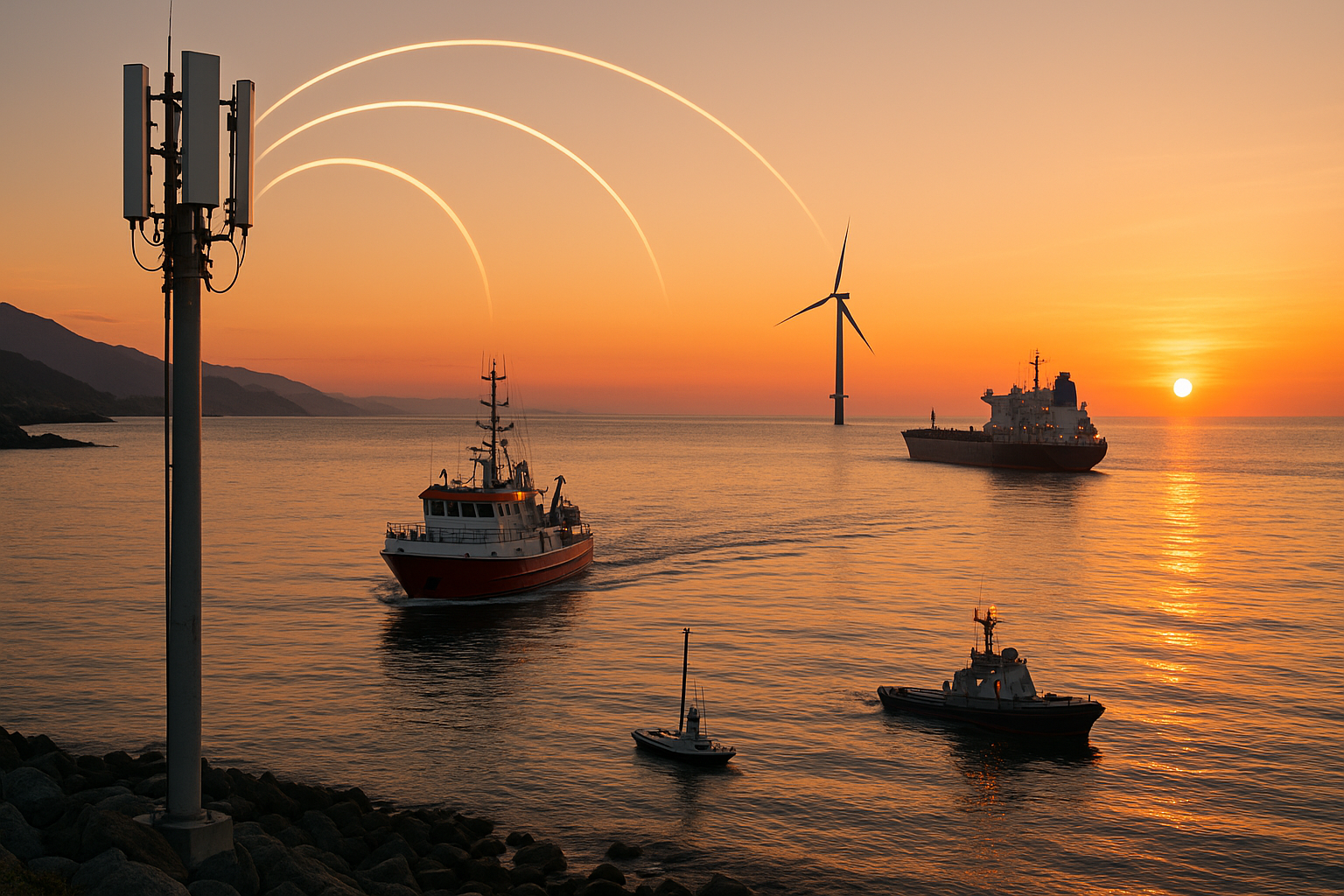The Practical Guide to Choosing the Right Tracker — Land & Sea
Why “the right tracker for the right place” matters
Tracking isn’t one-size-fits-all. Coverage, battery life, data rate, latency, and cost change dramatically between a city center, a rural railway, a harbor, and deep ocean. The best systems mix bearers (cellular, satellite, LPWAN) so data flows reliably—without draining batteries or budgets.
Rule of thumb: Use cellular when you can, satellite when you must, LPWAN when you want years of battery life.
When to use each transmission system
LTE/5G (Public or Private)
Best for: Real-time tracking, voice, video, diagnostics on land and nearshore.
Pros: High bandwidth, low latency, inexpensive data, eSIM options, easy OTA updates.
Watch-outs: Coverage gaps in rural/remote; power draw higher than LPWAN.
Best practices: Use MIMO antennas for 4G/5G, short low-loss RF cables, and rugged IP67/68 enclosures; consider private LTE/5G in ports or rail yards.
LTE-M / NB-IoT (Cellular LPWAN)
Best for: Battery-powered trackers sending periodic GNSS fixes and sensor data.
Pros: Deep indoor coverage, very low power, inexpensive modules/plans.
Watch-outs: Lower throughput; make payloads compact and use scheduled reporting.
Best practices: Optimize wake/sleep cycles; store-and-forward when the network is unavailable.
LoRaWAN (Private or Community)
Best for: Dense assets in fixed areas (depots, terminals, ports, yards).
Pros: Multi-year battery life, low cost per device, you control coverage.
Watch-outs: Limited range over water, no native backhaul, duty-cycle limits.
Best practices: Place gateways high and clear; use confirmed uplinks sparingly; backhaul via fiber/cellular.
Iridium (LEO Satellite)
Best for: Offshore/remote operations, global coverage, emergency/SOS.
Pros: Pole-to-pole visibility, small terminals (SBD), resilient in disasters.
Watch-outs: Higher data cost and power; design for compact messages.
Best practices: Mount antennas with sky view (patch or helical), use store-and-forward, compress payloads, and set smart reporting intervals.
Choosing by environment
Land (urban → rural)
Start with LTE/5G for live tracking and rich data; add LTE-M/NB-IoT or LoRaWAN if assets idle long periods or power is limited.
Rail and heavy machinery benefit from private LTE/5G or LoRaWAN on-site plus public LTE for backhaul.
For dead zones (forestry, remote quarries), consider dual-mode trackers (LTE + Iridium).
Sea (harbour → deep ocean)
Within coastal cells, LTE/5G supports video/voice and high-rate telemetry.
In ports, LoRaWAN is ideal for sensorized containers, cold-chain, and yard equipment.
Beyond shore coverage, switch to Iridium for periodic position, alerts, engine data, and SOS. Hybrid trackers will auto-failover.
Device features that matter (regardless of tracker)
GNSS + assists: Multi-constellation (GPS/Galileo/BeiDou); use Wi-Fi/BLE sniffing in urban canyons.
Power system: Select Li-ion/Li-SOCl₂ packs sized for your reporting interval; consider solar topsides at sea.
Antenna system: Match polarization (vertical for LTE/LoRa, RHCP for satcom), keep clear of metal/body, and test on-platform for VSWR < 2:1.
Rugged & compliant: IP67/68; IEC 60945 for maritime; e-mark/ECE R10 for vehicles; salt-fog and vibration (e.g., MIL-STD-810) where relevant.
Security & fleet management: TLS, signed OTA updates, encrypted storage, device heartbeats, and geofencing.
Example reporting profiles
Urban van (LTE/5G): 10-second positions while moving; event-based (ignition, harsh-brake); OTA firmware over cellular.
Rail wagon yard (LoRaWAN): 5-minute positions when moving; hourly when idle; battery target 3–5 years.
Fishing vessel hybrid (LTE + Iridium): 1-minute nearshore over LTE; every 5–10 minutes offshore via Iridium; SOS and geofence alerts always-on.
Procurement checklist
Coverage map (cellular + satellite) across your route or AO.
Power budget vs. desired reporting interval.
Antenna/enclosure plan and mounting location.
Data plan and total cost of ownership (device + airtime + platform).
Compliance requirements (maritime/vehicle).
Fleet platform integrations (API/webhooks, dashboards, alerting).

